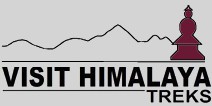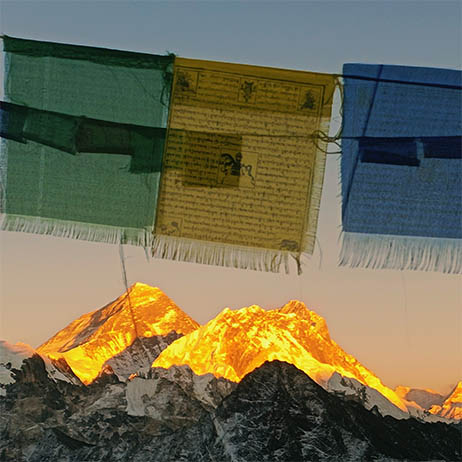Winter Vacation in Nepal seems to be full of relaxing and cultural tours. However, there are few places where tourists prefer trekking during winter to enjoy the snowy landscapes. Trekkers and explorers seem to be fond of the availability of lower-elevation treks such as Mardi Himal Trek, Langtang Valley Trek, Australian Camp Trek, Ghorepani Poon Hill Trek, Annapurna Community Lodge Trek, Pikey Peak Trek, Everest Panorama Trek are the best short treks can be done during the winter time in Nepal.
The season of winter gives you a perfect time to immerse subtly into the monumental, cultural, social, and traditional mythos of the Kathmandu Valley.
It is the golden season to explore the Terai region. Winter tour is fanciful with activities such as wildlife safari, exploring cultural and heritage sites, winter sports, witnessing panoramic mountain views, and touring national parks. Such activities in a hospitable environment allow travelers a desired relaxation and a great way to expend their time for refreshments.
Around a year, the season of winter lasts for about three months, offering you an opportunity to set up a cultural vacation a relaxing vacation some winter trekking experiences, and even a combination of all.

Annapurna South, Hiuchuli, and Fishtail View from Dhampus.
When is the Winter Season in Nepal?
Duration: Late November to February,
December marks the official start of winter in Nepal. Winter heralds from late November and lasts until February. The transition from the autumn season to winter is gradual, and the weather patterns change as the months progress. The latter part of November sees a gradual decrease in temperatures, especially in the higher altitudes and mountainous regions.
By early December, winter begins to set in more noticeably, with colder temperatures becoming more widespread across the country. January is usually the coldest month of the year in Nepal. Temperatures drop further, and in the mountainous region snow falls continuously. While February marks the gradual transition to spring.
Where to go in Winter in Nepal?
- Eastern Terai: The Eastern Terai of Nepal offers the most beautiful agricultural fields and ethnical diversities. You can witness the open plain fields garnished with different crops at varying altitudes and cultural differences among the Eastern natives in the districts of Jhapa, Illam, Biratnagar.
You’ll see the typical houses in Terai having thatched-roof; and the cultural, religious, and social lifestyles of Tharu, Rai, Limbu, and Magar communities being vastly different than the Sherpa community, Newar Community, and Tamang Community. Also, you’ll explore the differences between city life and the rural parts of the regions and get to primarily assess the way of living.
- National Parks and Wildlife Reserves: You may visit notable national parks and wildlife reserves in the Terai. Some of them provide a crucial habitat for migratory birds, during the winter, that travel from as far as Siberia and Tibet. Those protected areas provide home to endangered species such as the One-Horned Rhinoceros, Bengal Tiger, Gharial, Swamp Deer, Asian Elephant, Leopard, Sloth Bear, Wild Water Buffalo, and Gigantic Dolphin. Some national parks have unique ecosystems such as grassland, wetlands, and riverine, and the national park called Bardiya National Park is special for observing Bengal Tigers, One-Horned Rhinoceros, and many different birds in this National Park.
- Ancient Heritage of Terai: The presence of several ancient heritage sites of Terai adds interest to niche tourists. They offer insights into the region’s cultural and historical past. Some of them hold international significance and have great importance to certain religious communities. Here are the two important ancient heritage sites of Terai to visit:
a. Lumbini: Lumbini is one of the most significant ancient heritage sites renowned as the birthplace of Siddhartha Gautam Buddha. The Maya Devi Temple and other monuments in Lumbini are UNESCO World Heritage Sites and draw pilgrims and tourists from around the world.
b. Janakpur: Janakpur is a historic and cultural city, famous for its association with the Hindu epic, the Ramayana. Janakpur is the birthplace of Sita, the wife of Lord Ram. The city is home to many temples and shrines dedicated to Lord Ram and Goddess Sita.
- Kathmandu Valley and its Outskirts: Visiting the major cities in Kathmandu Valley, Mangal Bazaar in Patan, Bhaktapur, Kritipur, Basantapur in Kathmandu, Boudhanath Stupa and Swayambhu also known bu Monkey Temple provides a unique opportunity to experience the medieval ambiance and artistic excellence of Nepal’s oldest cities. The cities are the living museum of traditions and cultures.
There are exquisite landscapes on the outskirts of the Kathmandu Valley such as Chobhar, Nagarkot, Chandragiri Hill, Kakani, and many other places that provide a refreshing contrast to the urban intensity of the Kathmandu Valley. Winter is a perfect time to dawdle in these places and give yourself the chance to be treated subtly.
- Pokhara: Pokhara is a popular tourist destination located approximately 200 kilometers south of Kathmandu, providing a set of adventures like Paragliding, Zip-lining, Bunjee, Boating, and Lake Kayaking. Its unique blend of natural beauty, adventure, and cultural experiences has made it a sought-after destination for both domestic and international travelers.
The relaxing atmosphere and facilities catering to tourists make it a flawless brew for your cozy vacation. The iconic monument, Peace Pagoda is situated on a hilltop overlooking Phewa Lake and the town of Pokhara offering panoramic views of the Annapurna range. Similarly, Sarangkot is another popular viewpoint for sunrise and sunset views over the Annapurna and Dhaulagiri mountain ranges.
- Langtang Region: The Langtang Valley is situated to the north of Kathmandu and is easily accessible from the city. The trek is introductory making it preferable for anyone desiring to encounter breathtaking mountain views, including Langtang Lirung (7,227 meters) and other towering peaks. The valley may get an episode of snowfall in winter providing a memorable and rewarding Himalayan experience.

Winter Holidays In Nepal
- Ghorepani Poon Hill: The highest point of the Ghorepani Poon Hill trek is at 3,120 meters. You’ll have the opportunity to visit charming villages along the way, including Ghorepani and Ghandruk, where you can experience the local culture and hospitality of the Gurung and Magar communities. The trek offers close-up views of several Himalayan Peaks, including Annapurna South (7,219 m), Annapurna I 98,091 m), Dhaulagiri (8,167m), and Machapuchare (6,993 m).
- Mardi Himal Base Camp: The Mardi Himal Trek offers a relatively quieter and less commercialized trekking experience, that provides a chance to interact with the Gurung community. The trek offers a variety of landscapes, from lush rhododendron forests to terraced alpine meadows and snow-covered trails during winter.
- Australian Camp: The Australian Camp Trek is a relatively short and easy trek near Pokhara that offers stunning panoramic views of the Annapurna and Dhaulagiri mountain ranges. The trek is relatively less crowded than some popular trekking routes, offering a peaceful and tranquil experience.
- Manang Valley: Manang, located in the Annapurna Circuit offers a picturesque winter setting with snow-covered villages, ancient monasteries, and breathtaking mountain views. The region is known for its Tibetan-influenced culture and stunning landscapes.
Why should you visit Nepal in Winter?
Nepal can be a different country for tourists during the winter months compared to other seasons. Visiting Nepal during the winter season offers a unique and rewarding experience that is distinct from other times of the year. While spring and autumn are popular trekking seasons, winter brings its own set of advantages and attractions. A few of the things that only winter can provide, obliging you to visit Nepal in winter are:
- Winter Festivals: Nepal celebrates several cultural and religious festivals during the winter months adding vibrant colors and lively festivities to the colder season. Major festivals such as Dashain, Tihar, Maghe Sankranti, Lhosar, and Yomari Punhi fall in the winter season. Visiting Nepal in winter allows you to immerse in the country’s rich traditions, rituals, and celebrations.
- Favorable Climate: The subtropical and tropical climate in the Terai region makes it favorable to vacation in winter. As these zones in winter experience mild winter, and are drier and generally cooler, giving a golden opportunity to explore the Terai. The tour takes you to biologically diversified National Parks home to many endangered species and jungle safari allowing you the exact wildlife experience.
- Interesting Trek Opportunities: Langtang Trek, Poon Hill Trek, Mardi Himal Trek, and Pikey Peak Trek all offer unique and captivating experiences during the winter season. While trekking in Nepal’s winter comes with its challenges, these treks have their special attractions that make them interesting and rewarding during this time.
- Quieter Trails: The off-season provides a quiet ambience allowing you to enjoy the tranquility of the trail and the local villages. Trekking trails are less crowded during winter, granting you a more secluded and serene setting of the trekking atmosphere.
- Snow-Covered Landscapes: The rhododendron forests and trails are dusted with snow adding a serene and picturesque quality to the landscape. Winter transforms the landscapes into a winter wonderland with snow-covered trails, trees, and mountains. Trekking through snow-covered terrain adds a magical touch to the experience.

Ama Dablam, Lhotse, and Everest view right to left, While winter treks in Nepal.
Major Attractions of Winter in Nepal
The attractive things about winter in Nepal are:
- Jungle Safari: Also called wildlife safari, it is a major attraction in Nepal. In the month of winter, wildlife safaris offer a unique opportunity to observe a diverse range of animals and bird species in their natural habitats, while also enjoying the serene and peaceful ambiance of the parks. Doing a jungle safari by riding an elephant in Chitwan National Park adds a golden fragrance.
- Hot Springs: Hot springs are especially appealing during the cooler winter months. Those hot springs available in Tatopani and Jhinu Danda soothe your muscles and give you warm natural spring dipping.
- Wildlife Sightings: Winter is a good time for wildlife enthusiasts to spot animals such as migratory birds, red pandas, and other animals in national parks and wildlife reserves.
- Everest Heli Tour: The tour offers a thrilling and awe-inspiring adventure, allowing travelers to witness the breathtaking beauty of the Everest region and its iconic peaks, from a unique aerial perspective. The tour is all about a helicopter flight from Kathmandu to Lukla, may even have the opportunity to land at Kala Patthar for a close view of Mt. Everest for an up-close experience. Such a tour has garnered positive feedback from participants.
Accommodations in the Winter Season
Accommodations in the winter season, especially in higher altitudes may close or operate in limited numbers due to the decreased visitors. While those in operations may provide basic amenities, limited services with heating in communal areas. So, reservations in advance and warm clothing gear are recommended.
There’s no shortage of accommodations and teahouses in other regions. In popular destinations like Chitwan and Lumbini, hotels, resorts, lodges, and guesthouses with heating facilities are available. In Kathmandu, Pokhara, Nagarkot, Dhulikhel, and Bandipur a range of accommodations, including budget guesthouses to luxury hotels with heating and hot water are available.
Temperature and Weather Conditions in Winter
Temperature and weather conditions in Nepal vary based on the climate zones. Nepal has a diverse climate due to its varying topography, ranging from the Subtropical to Tropical and Subalpine to Alpine. The temperature and weather conditions in different parts of Nepal in winter are summarized below:
Temperature Chart in Winter:
Region
Day-time (Celsius)
Night-time (Celsius)
Nature of Temperature
Terai Lowland
10 - 20
5 - 10
Milder Winter
Southern Plain
15 - 25
10 - 15
Moderate Winter
Hill Stations
10 - 15
2 - 5
Moderate Winter
High Mountains
(-5) - 10
(-15) - (-20)
Extreme Winter
Rain Shadow
5 - 10
0 and below
Cold Winter
Weather in Winter:
- The Terai Lowland experiences dry and pleasant weather. Fog and haze might occur in the early mornings and evenings, but overall, it’s a good time to explore this region.
- The Southern Plains have a dry and pleasant winter, with comfortable weather for outdoor activities.
- The Hill Stations experience dry and clear days with occasional mist in the early mornings and evenings. However, the weather is comfortable for outdoor activities and sightseeing.
- The High Mountains in winter are characterized by cold temperatures, snowfall, and freezing conditions. Trekking routes and high passes might be challenging due to snow and icy trails.
- The Rain Shadow areas such as Manang and Mustang have relatively dry winters. Clear skies are common, providing excellent mountain views.

Winter Treks In Langtang Valley Trek
Pros and Cons of the Winter Trek in Nepal
Pros.
A winter trek in Nepal offers a distinct and captivating experience that differs from trekking during the summer months. Winter trekking provides unique aspects and experiences that you don’t find during spring or autumn treks. Here are some things that winter provides that you might not experience as much during trekking in other seasons:
- Clear Mountain Views: You’re more likely to enjoy unobstructed and stunning views of fresh-snow-covered peaks as skies are often clear and less hazy.
- Unique Photography Opportunities: Snow-covered landscapes, clear skies, and panoramic mountain views offer exceptional photography opportunities that highlight the beauty of the snow in the surroundings.
- Quieter Trails: The off-season trekking will allow you to enjoy quiet trails by enhancing the sense of solitude and serenity.
- Sense of Adventure: Overcoming the unique challenges of winter trekking, such as cold weather and potentially icy trails, adds an extra sense of adventure and accomplishment to your journey.
- Less Humidity and Insects: Winter brings lower humidity levels and fewer insects, offering a more comfortable and hassle-free trekking experience.
Cons,
Winter in Nepal is generally colder, especially in the higher elevations, including popular trekking areas like the Everest and Annapurna regions. It is a season of harshness in high-altitude regions due to significant drops in temperatures. Trekking routes and high-altitude regions experience colder temperatures and snow, so it becomes challenging due to disrupted trails and icy terrains of high passes.
Mornings and Evenings are typically cold and it is highly important to stay warm with clothing layers. Snow-covered trails add scenic beauty but require appropriate gear like insulated boots, gaiters, and trekking poles when we travel to the mountain zone. The crisp air can lead to breathtaking panoramic vistas, but the trade-off is the colder temperatures.
If you’re planning to for trekking or outdoor activities, it’s crucial to be prepared for cold temperatures and potential snowfall. Proper clothing gear and knowledge of the trail conditions are essential for a safe and enjoyable experience.
Conclusion
No season is an off-time if you want to explore Nepal and its aesthetics. Therefore, winter is not boring in Nepal, in another way it is the golden season when we explore the Terai region, witness winter festivals, perform winter sports, and make a gateway for interesting trek opportunities.
Believe it or not, the journey will be spiritual and inspiring as you get the chance to connect with every single natural potion. Winter tours have generously captivated the seekers of peace, adventure, and nature wonders.
Travelers around the world swore an affidavit that Nepal is the land of adventure, peace, culture & harmony, and mention not the refreshing jungle safari.









